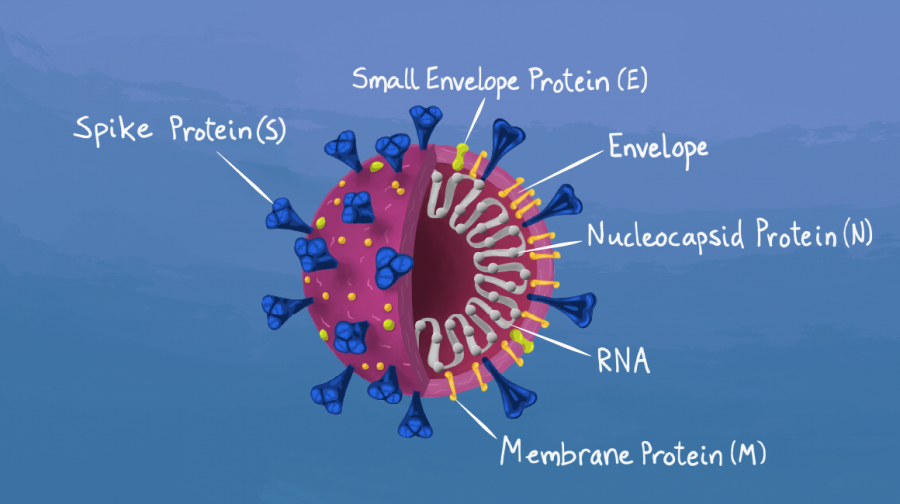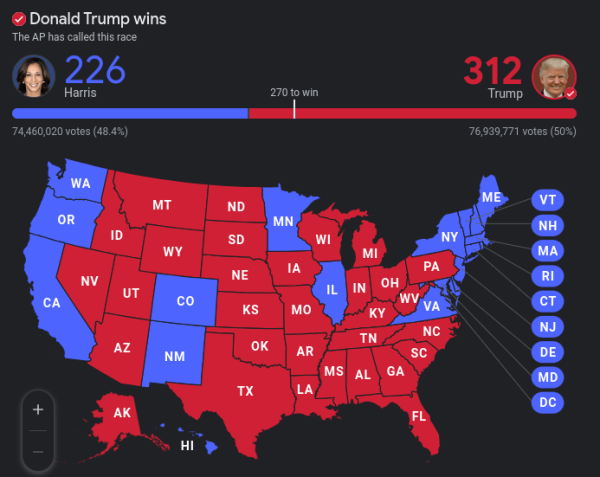Overview of the COVID-19 Vaccine
Photo by innovativegenomics.org
Diagram of the COVID-19 virus.
The race for an effective vaccine has been no secret, and it’s kept the whole world in suspense. The question is, what lies ahead?
Several different companies have been performing vaccination tests recently, most of which have proven to be effective. The two companies closest to a deliverable vaccine currently are Moderna and Pfizer.
This treatment is unlike the traditional flu shot, though, as two doses are required for it to be effective. For Pfizer’s vaccination, you’ll need to return to receive a second shot three weeks after the first. Moderna’s wait time for the second shot is four weeks.
It’s a new development process as well, one that has not been seen previously for other diseases. Instead of using the actual virus for testing, they’ve been able to train the human immune system to recognize the “spike protein” on the virus. You’ve likely seen these spike proteins in COVID-19 pictures before, as they’re the long, spike-like shapes protruding from the center of the virus.
The proteins of COVID-19 attach themselves to the human’s cell receptors, causing the person to be infected. This is where the vaccine enters: it blocks the spike proteins from attaching to the receptors, thus preventing the infection.
The efficacy of these treatments is undoubtedly in question by many people, which is why Moderna and Pfizer have released their estimated effectiveness rates. Moderna released a 94.5% rate of success, while Pfizer’s was 94% in people above the age of 65. This can be compared to the Flu vaccinations which generally range from 60-75%.
Of course, the first population to take it will consist of healthcare workers and those in assisted living centers, and estimates place them receiving the vaccine by the end of December. Healthcare workers have been on the frontlines for nine months now, and therefore have the highest risk of catching it. After that, the most likely to obtain it will be law enforcement, as they also deal with close-contact with other people daily. In Utah, Governor Herbert also moved teachers to higher on the list, estimating that they will receive the vaccine beginning in mid-January.
Operation Warp Speed is largely responsible for a vaccine likely being available to the general public as soon as May 2021. This organization consists of many sub organizations that have been determined by the U.S. government to be the most qualified for handling this pandemic. The most notable are the Department of Human Services, the Centers for Disease Control, and the National Institutes of Health.
Masks and social distancing may still be necessary for awhile, but the process has been expedited with our advanced healthcare and technology. A COVID-19 vaccine is within reach.


![Photo Credit; Miller, Kim. “City of Asheville prepares for a weekend of winter weather.” City of Asheville prepares for a weekend of winter weather [Ashville], 10 February 2023, https://www.ashevillenc.gov/news/city-of-asheville-prepares-for-a-weekend-of-winter-weather/. Accessed 06 January 2025.](https://binghamprospector.org/wp-content/uploads/2025/01/Screenshot-2025-01-14-7.54.38-AM.png)

